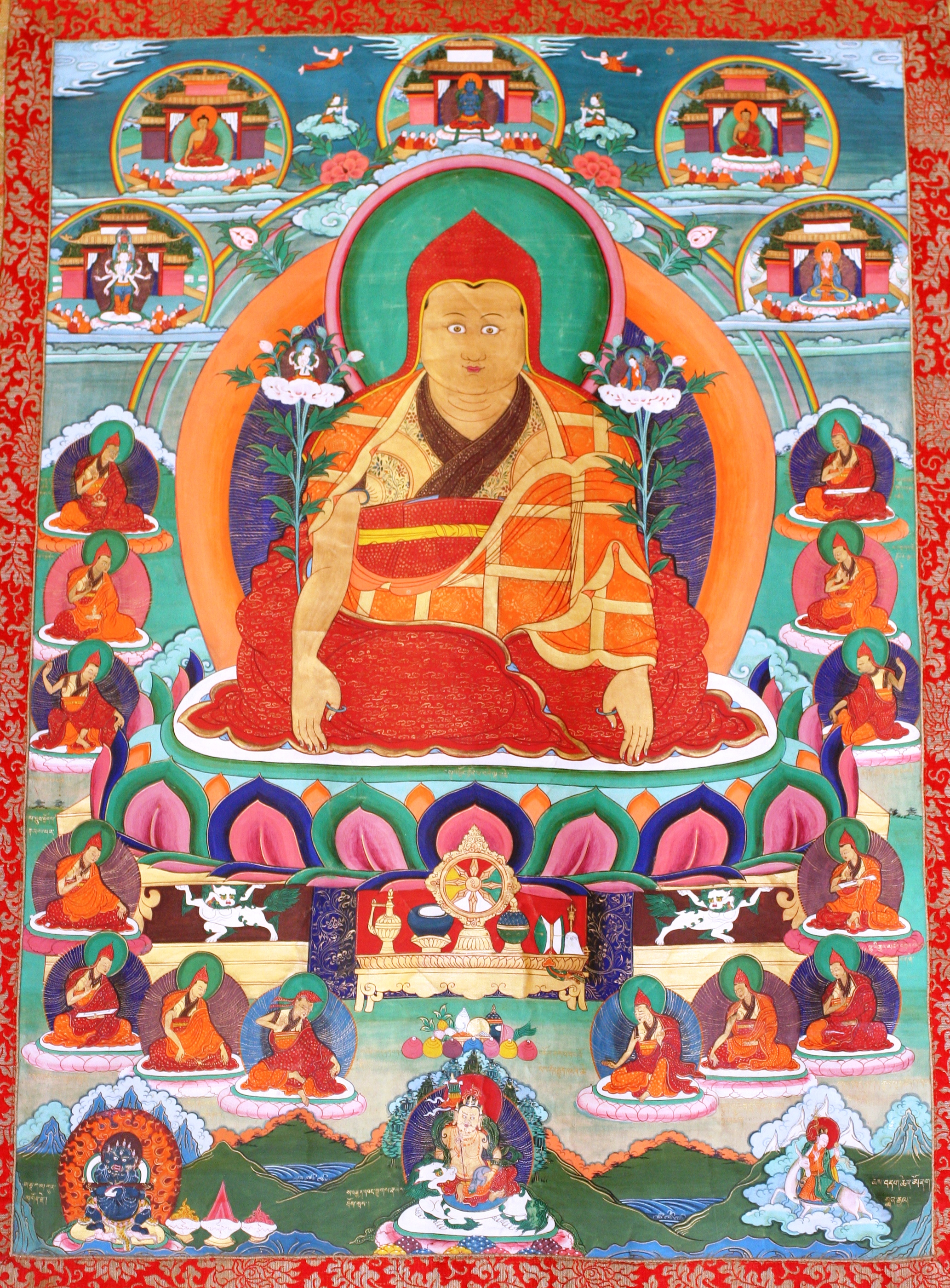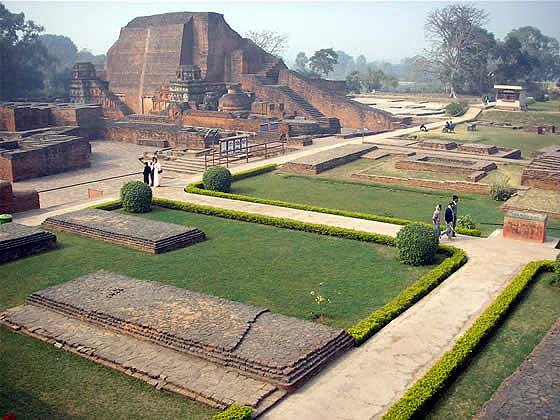|
Rangtong
''Rangtong'' and ''shentong'' are two distinctive views on emptiness ( sunyata) and the two truths doctrine within Tibetan Buddhism. Rangtong (; "empty of self-nature") is a philosophical term in Tibetan Buddhism which is used by Tibetan defenders of shentong, like Dölpopa, to distinguish the majority Madhyamaka teaching on the nature of śūnyatā or "emptiness", namely that all phenomenon are empty of an enduring and/or unchanging essence or "self," and that this emptiness is not an absolute reality, but a mere nominal characterisation of phenomena. It is related to the '' prasangika'' approach, which argues that no positive statements should be made to deconstruct the notion of inherent existence, but only arguments which show the logical implications and absurdity of statements. This position is the mainstream Gelugpa interpretation of Madhyamaka, one of the main Mahayana schools, which dominates Vajrayana Buddhism. ''Shentong'' ( Wylie: ''gzhan stong'', "emptiness of other ... [...More Info...] [...Related Items...] OR: [Wikipedia] [Google] [Baidu] |
Buddha-nature
In Buddhist philosophy and soteriology, Buddha-nature ( Chinese: , Japanese: , , Sanskrit: ) is the innate potential for all sentient beings to become a Buddha or the fact that all sentient beings already have a pure Buddha-essence within themselves.Heng-Ching ShihThe Significance Of 'Tathagatagarbha' – A Positive Expression Of 'Sunyata'/ref> "Buddha-nature" is the common English translation for several related Mahāyāna Buddhism, Buddhist terms, most notably ''tathāgatagarbha'' and ''buddhadhātu'', but also ''sugatagarbha,'' and ''buddhagarbha''. ''Tathāgatagarbha'' can mean "the womb" or "embryo" (''garbha'') of the "thus-gone one" (''Tathagata, tathāgata''), and can also mean "containing a ''tathāgata''"''. Buddhadhātu'' can mean "buddha-element", "buddha-realm", or "buddha-substrate". Buddha-nature has a wide range of (sometimes conflicting) meanings in Indian Buddhism and later in East Asian Buddhism, East Asian and Tibetan Buddhism, Tibetan Buddhist literatur ... [...More Info...] [...Related Items...] OR: [Wikipedia] [Google] [Baidu] |
Madhyamaka
Madhyamaka ("middle way" or "centrism"; ; ; Tibetic languages, Tibetan: ýΩëýΩñýΩ¥ýºãýΩòýºãýΩîýºã ; ''dbu ma pa''), otherwise known as ≈ö≈´nyavƒÅda ("the ≈ö≈´nyatƒÅ, emptiness doctrine") and Ni·∏•svabhƒÅvavƒÅda ("the no Svabhava, ''svabhƒÅva'' doctrine"), refers to a tradition of Buddhist philosophy and practice founded by the History of Buddhism in India, Indian Buddhist monk and philosopher Nagarjuna, NƒÅgƒÅrjuna ().Wynne, Alexander (2015) ''Early Buddhist Teaching as Proto-≈õ≈´nyavƒÅda.'' Journal of the Oxford Centre for Buddhist Studies, 6. pp. 213-241. The foundational text of the MƒÅdhyamaka tradition is Nagarjuna, NƒÅgƒÅrjuna's ''M≈´lamadhyamakakƒÅrikƒÅ'' ("Root Verses on the Middle Way"). More broadly, Madhyamaka also refers to the ultimate nature of phenomena as well as the non-conceptual realization of ultimate reality that is experienced in Buddhist meditation, meditation. Since the 4th century CE onwards, Madhyamaka philosophy had a major influence on the subsequent d ... [...More Info...] [...Related Items...] OR: [Wikipedia] [Google] [Baidu] |
śūnyatā
''Śūnyatā'' ( ; ; ), translated most often as "emptiness", " vacuity", and sometimes "voidness", or "nothingness" is an Indian philosophical concept. In Buddhism, Jainism, Hinduism, and other Indian philosophical traditions, the concept has multiple meanings depending on its doctrinal context. It is either an ontological feature of reality, a meditative state, or a phenomenological analysis of experience. In Theravāda Buddhism, ' often refers to the non-self (Pāli: ', Sanskrit: ') nature of the five aggregates of experience and the six sense spheres. ' is also often used to refer to a meditative state or experience. In Mahāyāna Buddhism, ' refers to the tenet that "all things are empty of intrinsic existence and nature ('' svabhava'')", but may also refer to the Buddha-nature teachings and primordial or empty awareness, as in Dzogchen, Shentong, or Chan. Etymology ''Śūnyatā'' is usually translated as "devoidness", "emptiness", "hollow", "hollowness", "v ... [...More Info...] [...Related Items...] OR: [Wikipedia] [Google] [Baidu] |
Ratnagotravibhāga
The ''Ratnagotravibhāga'' (Sanskrit, abbreviated as RGV, meaning: ''Analysis of the Jeweled Lineage, Investigating the Jewel Disposition'') and its ''vyākhyā'' commentary (abbreviated RGVV to refer to the RGV verses along with the embedded commentary), is an influential Mahāyāna Buddhist treatise on buddha-nature (a.k.a. tathāgatagarbha). The text is also known as the ''Mahāyānottaratantraśāstra (The Ultimate Teaching of the Mahāyāna).''Gardner, Alex. "On the ''Ratnagotravibhāga''." ''Buddha-Nature: A Tsadra Foundation Initiative'', September 12, 2018. https://buddhanature.tsadra.org/index.php/Articles/On_the_Ratnagotravibh%C4%81ga . The RGVV was originally composed in Sanskrit, likely between the middle of the third century and no later than 433 CE.Takasaki (1966), The text and its commentary are also preserved in Tibetan and Chinese translations''.'' The ''Ratnagotra'' focuses on the buddha nature present in all sentient beings, which is eternal, blissful, uncondit ... [...More Info...] [...Related Items...] OR: [Wikipedia] [Google] [Baidu] |
Kagyu
The ''Kagyu'' school, also transliterated as ''Kagyü'', or ''Kagyud'' (), which translates to "Oral Lineage" or "Whispered Transmission" school, is one of the main schools (''chos lugs'') of Tibetan Buddhism, Tibetan (or Himalayan) Buddhism. The Kagyu lineages trace themselves back to the 11th century Indian Mahasiddhas Naropa, Maitripa and the yogini Niguma, via their student Marpa Lotsawa (1012–1097), who brought their teachings to Tibet. Marpa's student Milarepa was also an influential poet and teacher. The Tibetan Kagyu tradition gave rise to a large number of independent sub-schools and lineages. The principal Kagyu lineages existing today as independent schools are those which stem from Milarepa's disciple, Gampopa (1079–1153), a monk who merged the Kagyu lineage with the Kadam (Tibetan Buddhism), Kadam tradition. The Kagyu schools which survive as independent institutions are mainly the Karma Kagyu, Drikung Kagyu, Drukpa Lineage and the Taklung Kagyu. The Karma Kag ... [...More Info...] [...Related Items...] OR: [Wikipedia] [Google] [Baidu] |
Sakya Chokden
Serdok Penchen Sakya Chokden (gser mdog pan chen shakya mchog ldan, 1428–1507) (also transliterated as ''Shakya Chogden'') was one of the most important religious thinkers of the Sakya school of Tibetan Buddhism. He was a student of Rongtön Shecha Kunrig (1367-1449), Dönyö Pelwa, Künga Zangpo and many other Tibetan scholars.Komarosvski, Yaroslav. ''Visions of Unity: The Golden Pandita Shakya Chokden's New Interpretation of Yogacara and Madhyamaka'', SUNY 2011, page 4. He also received empowerments and studied under several Kagyu lineages. Sakya Chokden's seat was the Thubten Serdogchen monastery in south Shigatse. Philosophy Sakya Chokden broke from Sakya orthodoxy and wrote a highly critical commentary to Sakya Pandita's "A thorough differentiation of the three vows" posing over 100 questions to Sakya scholars on this text. This event caused some controversy and Chokden answered his own questions in his subsequent "Golden lancet". Sakya Chokden's ''Definite ascertainment o ... [...More Info...] [...Related Items...] OR: [Wikipedia] [Google] [Baidu] |
Ratnākaraśānti
Ratnākaraśānti (also known as Ratnākara, Śāntipa, and Śānti) (late 10th-century CE to mid 11th-century CE) was an influential Buddhist philosopher and vajrayana tantric adept and scholar. He was the "gate scholar" of Vikramaśilā university's eastern gate (modern-day Bihar in India), a key post in the university's leadership. Ratnākara was known by the title ''kalikālasarvajña'' ("the Omniscient One of the Degenerate Age") and is depicted as one of the eighty-four mahāsiddhas (great yogic masters). Ratnākara wrote over forty works which include several influential commentaries to Mahayana sutras and tantras (especially the '' Hevajra tantra''), treatises on Yogācāra, Madhyamaka, and Pramāṇa. Because his unique philosophy attempts to merge the insights of both Yogācāra and Madhyamaka, Ratnākara referred to it as Trisvabhāva-mādhyamaka ("the middle way of the three natures"). He also known as a major defender of the "nirākāravāda" (without images") in ... [...More Info...] [...Related Items...] OR: [Wikipedia] [Google] [Baidu] |
Tibetan Buddhism
Tibetan Buddhism is a form of Buddhism practiced in Tibet, Bhutan and Mongolia. It also has a sizable number of adherents in the areas surrounding the Himalayas, including the Indian regions of Ladakh, Gorkhaland Territorial Administration, Darjeeling, Sikkim, and Arunachal Pradesh, as well as in Nepal. Smaller groups of practitioners can be found in Central Asia, some regions of China such as Northeast China, Xinjiang, Inner Mongolia and some regions of Russia, such as Tuva, Buryatia, and Kalmykia. Tibetan Buddhism evolved as a form of Mahayana, Mahāyāna Buddhism stemming from the latest stages of Indian Buddhism (which included many Vajrayana, Vajrayāna elements). It thus preserves many Indian Buddhist Tantra, tantric practices of the Gupta Empire, post-Gupta Medieval India, early medieval period (500–1200 CE), along with numerous native Tibetan developments. In the pre-modern era, Tibetan Buddhism spread outside of Tibet primarily due to the influence of the Mongol Emp ... [...More Info...] [...Related Items...] OR: [Wikipedia] [Google] [Baidu] |
Buddhist Philosophy
Buddhist philosophy is the ancient Indian Indian philosophy, philosophical system that developed within the religio-philosophical tradition of Buddhism. It comprises all the Philosophy, philosophical investigations and Buddhist logico-epistemology, systems of rational inquiry that developed among various schools of Buddhism in ancient India following the ''Parinirvana, parinirvāṇa'' of Gautama Buddha (c. 5th century BCE), as well as the further developments which followed the Silk Road transmission of Buddhism, spread of Buddhism throughout Asia. Buddhism combines both philosophical reasoning and the Buddhist meditation, practice of meditation.Siderits, Mark. Buddhism as philosophy, 2007, p. 6 The Buddhist religion presents a multitude of Buddhist paths to liberation; with the expansion of early Buddhism from ancient India to Sri Lanka and subsequently to East Asia and Southeast Asia, Buddhist thinkers have covered topics as varied as cosmology, ethics, epistemology, logic ... [...More Info...] [...Related Items...] OR: [Wikipedia] [Google] [Baidu] |
Jonang
The Jonang () is a school of Indo-Tibetan Buddhism. Its origins in Tibet can be traced to the early 12th century master Yumo Mikyo Dorje. It became widely known through the work of the popular 14th century figure Dolpopa Sherab Gyaltsen. The Jonang school's main practice is the ''Kālacakra tantra'' (''Wheel of Time Tantra''), and they are widely known for their defense of the philosophy known as shentong ("empty of other"). After a period of influence, the Jonang tradition suffered a series of reversals, partly due to its suppression by the politically dominant Gelug school under the Fifth Dalai Lama in the 17th century. Jonang did survive in Amdo, from which they eventually re-established themselves in other regions like Golok, Nakhi, and Kham. They have continued practicing uninterrupted to this day. An estimated 5,000 monks and nuns of the Jonang tradition practice today in these areas. However, their teachings were limited to these regions until the Rimé moveme ... [...More Info...] [...Related Items...] OR: [Wikipedia] [Google] [Baidu] |
Ātman (Hinduism)
''Ātman'' (; ) is a Sanskrit word for the true or eternal Self or the self-existent essence or an impersonal (''it'') witness-consciousness within each individual. Atman is conceptually different from Jīvātman, which persists across multiple bodies and lifetimes. Some schools of Indian philosophy regard the ''Ātman'' as distinct from the material or mortal ego ('' Ahankara''), the emotional aspect of the mind ('' Citta''), and existence in an embodied form ('' Prakṛti''). The term is often translated as soul, but is better translated as "Self", as it solely refers to pure consciousness or witness-consciousness, beyond identification with phenomena. In order to attain moksha (liberation), a human being must acquire self-knowledge ('' Atma Gyaan or Brahmajnana''). ''Ātman'' is a central concept in the various schools of Indian philosophy, which have different views on the relation between ''Atman'', individual Self ('' Jīvātman''), supreme Self ('' Paramātmā'') a ... [...More Info...] [...Related Items...] OR: [Wikipedia] [Google] [Baidu] |








